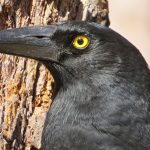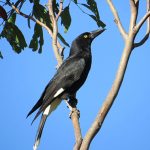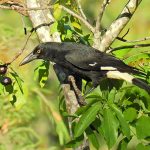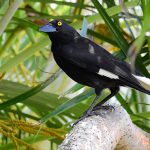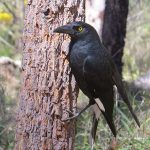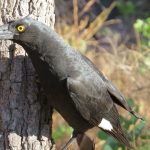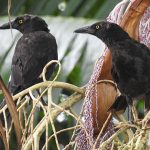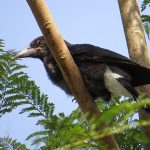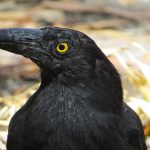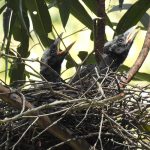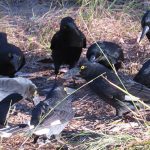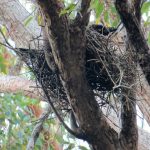PIED CURRAWONG
The Pied Currawong: Australia’s Black-and-White Songster
Perched high in the treetops, with a commanding presence and a bold, clear call, the Pied Currawong is a familiar sight and sound across much of mainland Australia. Its striking appearance and lively personality make it an unforgettable character in the Australian landscape.
Vivid Description
Picture a bird almost half a metre long, its glossy black feathers catching the sunlight, offset by brilliant white patches beneath its tail and wingtips. The Pied Currawong’s piercing yellow eyes seem to scan every movement in its surroundings, and its sturdy black bill is perfectly shaped for a varied diet. When it takes flight, flashes of white fan out from its tail, a visual signature against the green of eucalyptus forests or the grey of suburban streets.
Habitat and Distribution
| Region | Presence |
|---|---|
| Mainland Australia | Common |
| Tasmania | Absent |
- Found in forests, woodlands, and increasingly, in urban environments.
- Regular visitors to city parks and gardens, adapting well to human presence.
- Their adaptability has seen them thrive in changing landscapes.
Diet: An Opportunistic Feeder
The Pied Currawong’s menu is as varied as its habitats:
- Fruits & Berries: A favourite in both bushland and suburban gardens.
- Invertebrates: Insects, spiders, and other small creatures are regularly hunted.
- Small Vertebrates: Occasionally preys on lizards, small mammals, and even the nestlings of other birds.
- Scavenging: Known to take advantage of food scraps and leftovers, especially in urban settings.
These birds play a complex role in their ecosystem—helping to manage insect populations, but sometimes also challenging smaller birds through nest predation.
Vocal Repertoire
The soundscape of an Australian morning often features the Pied Currawong’s unique calls. Their voice is a rich blend—sometimes melodious, sometimes sharp—echoing through valleys or along city streets.
- Melodious notes: Rolling, flute-like phrases.
- Whistles and harsh calls: Used for communication and territory defence.
- Mimicry: They can imitate the calls of other birds, adding to the variety and confusion for those listening.
Imagine the air filled with layered, resonant calls, sometimes solemn, sometimes joyful—a true soundtrack of the Australian bush and suburbia alike.
Life Cycle and Breeding
When the air begins to warm in spring, the Pied Currawong turns its attention to raising the next generation.
- Nest Building: Large, sturdy, cup-shaped nests made from sticks, lined with grass and bark, are often hidden high in trees.
- Eggs: The female lays 2 to 4 eggs, cream or pale brown and speckled.
- Parental Care: Both parents share incubation duties and feed the chicks, their care continuing until the young are ready to leave the nest.
This teamwork strengthens family bonds and ensures the survival of their offspring in a sometimes challenging environment.
Conservation and Coexistence
Though the Pied Currawong remains widespread and adaptable, it faces challenges:
- Habitat Loss: Urban development reduces traditional nesting and foraging sites.
- Introduced Predators: Feral cats and foxes pose risks, especially to eggs and chicks.
- Changing Ecosystems: As landscapes shift, so do the delicate balances between native species.
Conservation Message
By understanding and respecting the role of the Pied Currawong in Australia’s ecosystems, we are reminded of the importance of preserving natural habitats and managing urban environments. Every garden tree, every protected woodland, is a step towards ensuring the survival of these remarkable birds—and the chorus they bring to our world.
The next time you hear a melodious, ringing call echo through the air, pause and look upwards. The Pied Currawong is not just a bird—it is a storyteller, a guardian of gardens, and a symbol of the wild, resilient heart of Australia.
Let us celebrate and protect these remarkable songbirds, ensuring their calls continue to enrich our shared landscape for generations to come.

